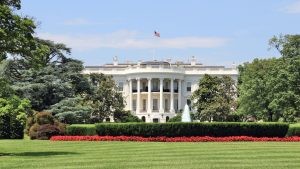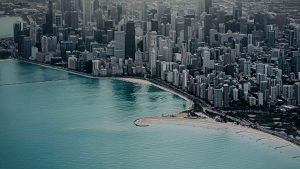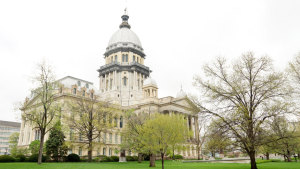Great Lakes
Containing nearly 20% of the earth’s fresh water, the Great Lakes represent the largest freshwater system in the world.

GREAT LAKES
The Great Lakes is the largest freshwater ecosystem on Earth

infrastructure
Illinois's water resources face many infrastructure challenges

nutrient pollution
Nitrogen & phosphorus pollution degrade our water

drinking water
Lead in drinking water threatens many IL communities
Threats To the Great Lakes
Current Great Lakes Laws
The primary federal law governing water pollution, with the objective of restoring and maintaining the chemical, physical, and biological integrity of the nation’s waters by preventing pollution, providing for the improvement of wastewater treatment, and maintaining the integrity of wetlands. Under the CWA, states have the “primary responsibilities and rights” to achieve the Act’s objectives.
With regards to point sources of water pollution discharges, the EPA determines discharge levels, issues and enforces permits, oversees a state’s program administration, and will take over if it determines that the state is underperforming.
The EPA establishes criteria for water quality, which is presumptively binding on states, each of which may establish designated water uses as long as the use doesn’t interfere with the attainment of downstream water quality.
The rule more precisely defines and predictably determines the scope of “waters of the United States” protected under the Clean Water Act. It clearly protects the streams and wetlands that form the foundation of the nation’s water resources from pollution and degradation.
Also known as the “Final Water Quality Guidance for the Great Lakes System,” the initiative is a comprehensive plan between the EPA and Great Lakes states to restore the health of the Great Lakes. The initiative includes criteria for states to use when setting water quality standards for 29 pollutants, including bioaccumulative chemicals of concern, and prohibits the use of mixing zones for these toxic chemicals.
The Great Lakes-St. Lawrence River Basin Water Resources Compact is a legally binding interstate compact between Illinois, Indiana, Michigan, Minnesota, New York, Ohio, Pennsylvania and Wisconsin. The compact details how the states will manage the use of the Great Lakes Basin’s water supply and is the means by which each state will implement its commitments under the Great Lakes–St. Lawrence River Basin Sustainable Water Resources Agreement that also includes the Premiers of Ontario and Quebec. The Council of Great Lakes Governors serves as secretariat to the Governors’ Compact Council created by the Compact. Illinois is exempt from certain provisions of the compact pertaining to new or increased withdrawals or diversions from the Great Lakes.
Section 52.5 of the Illinois Environmental Protection Act prohibits the production, manufacture, distribution and sale in Illinois of any personal care product containing plastic particles less than 5 millimeters in size. When consumers use personal care products such as facial scrubs and toothpaste containing microbeads, the beads are rinsed down the drain and into our sewer systems. Because of their small size and buoyancy, microbeads escape treatment by sewage plants and are discharged into rivers, lakes and oceans. These microbeads then absorb toxic chemicals which can be eaten by fish and wildlife.
Clean Water Updates
Analysis: Trump’s Big “Ugly” Bill
H.R. 1 drastically cuts key clean energy tax credits, chipping away at Illinois’ progress toward a clean energy economy and threatening to cut as many...
Read More >>Protected: Illinois’ Role in Great Lakes Protection
There is no excerpt because this is a protected post.
Read More >>2025 Legislative Report
IEC's state legislative team has published our 2024 Legislative Report detailing environmental wins and setbacks during this year's legislative session.
Read More >>As Chicagoans Brace for Higher Water Bills, Groups Push for Affordability Reforms
Water rates have more than doubled since 2010. Low-income residents feel the pinch most of all. On Sunday Chicagoans will face another spike in their...
Read More >>On Earth Day, EPA union workers decry cuts to clean air and water regulations
Fifty-five years after the first Earth Day, Environmental Protection Agency employees and advocates call for help as the Trump administration rolls back environmental regulations and...
Read More >>Illinois Has Your Back, Mother Earth
We can’t count on Washington to do right for the environment. Good thing Illinois’ environmental movement is on top of it.
Read More >>




